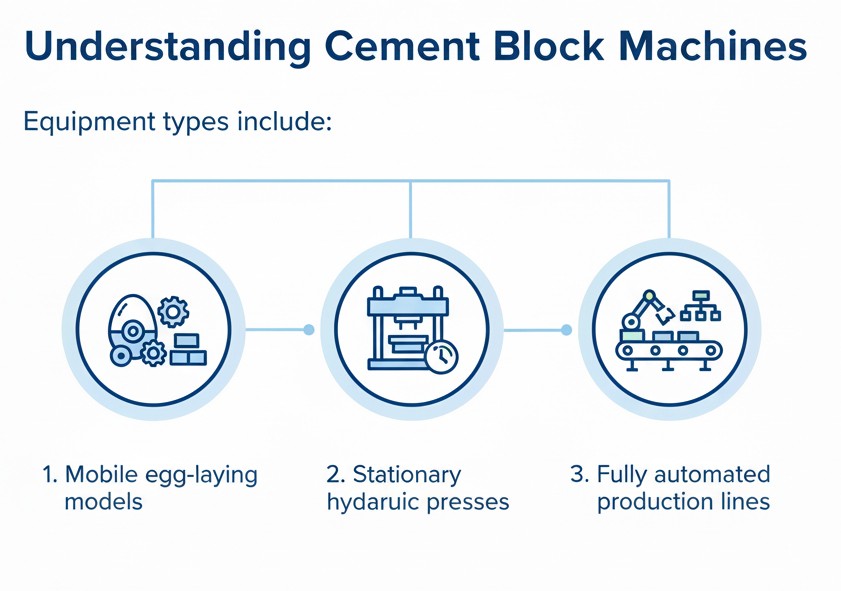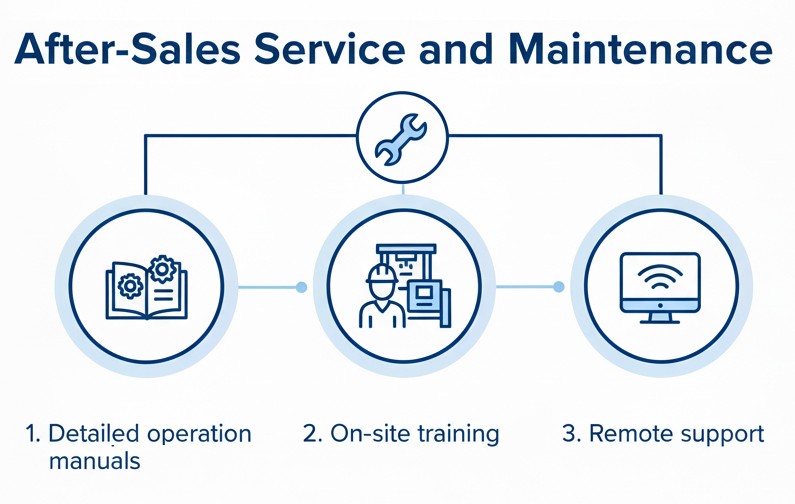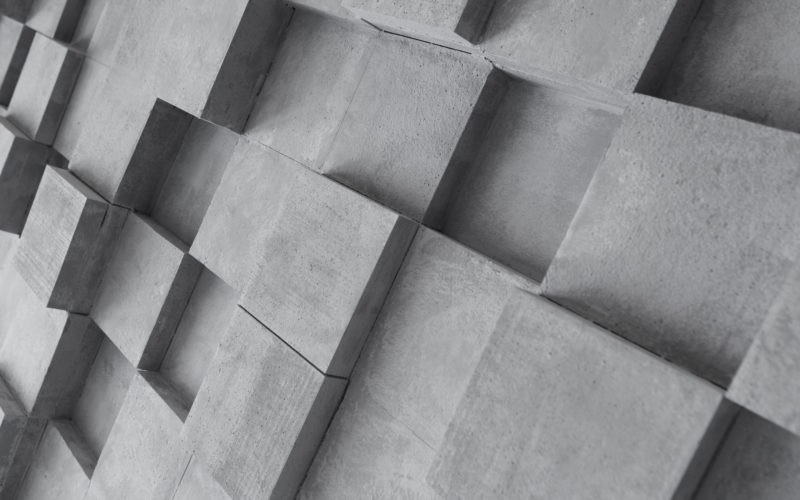Choosing the right cement block machine can determine construction project success. With numerous technical specifications and features available, selecting reliable equipment that boosts productivity and ensures consistent quality is essential. When evaluating a cement block machine, focus on durability, output capacity, and maintenance requirements. Investing in appropriate equipment saves time and money while supporting efficient project timelines and maintaining construction standards.
Understanding Cement Block Machines
Cement block machines shape, compact, and cure raw materials like cement and sand into concrete blocks used in construction projects. These machines range from small manual units producing 400–1,000 blocks per day to fully automatic lines exceeding 18,000 blocks daily.
Equipment types include:
- Mobile egg-laying models
- Stationary hydraulic presses
- Fully automated production lines
Machine features directly affect production efficiency, block consistency, and overall operating costs. Hydraulic systems typically offer higher block density and output compared to vibration-only models. Automation levels determine labor requirements—manual machines suit small sites, while automatic machines fit high-volume projects.
Material feed mechanisms, block size compatibility, and maintenance needs are also key differentiators. Machines designed to produce multiple block types—such as hollow, solid, or interlocking blocks—offer flexibility for both residential and commercial projects. Reliability and access to technical support further influence equipment lifespan and project timelines.

Key Factors to Consider Before Buying
Selecting a cement block machine directly affects construction output, operational reliability, and long-term costs. Evaluating each factor allows buyers to match machines to project needs and business goals.
Production Capacity and Efficiency
When assessing production capacity, check cycle time, blocks per cycle, and daily output. Machines with cycle times between 15–45 seconds can yield anywhere from 5,000 up to 20,000 blocks per 8-hour shift. Consistent, rapid cycle speeds allow efficient use of labor and energy, increasing profitability on large jobs. Matching production needs to current and future demand helps avoid both bottlenecks and overcapacity.
Machine Automation Level
Automation influences labor requirements and product consistency. Options range from manual models, which require multiple workers, to fully automatic machines with PLC controls, automated material feeds, and curing systems. Semi-automatic and fully automatic machines reduce workforce needs, minimize human error, and enable high-volume production.
Durability and Build Quality
Durability depends on structural strength, reliable components, and certifications. Machines built from high-grade steel and equipped with energy-efficient hydraulic systems withstand demanding operations. Verifying after-sales support, spare parts availability, and technical service reduces costly downtime.
Cost and Budget Considerations
Costs extend beyond the machine’s purchase price. Consider energy consumption, maintenance, and spare parts. Machines range from budget-friendly manual units to advanced fully automated production lines. Balancing upfront costs with long-term productivity ensures a cost-effective investment.
Evaluating Manufacturer Reputation and Support
A reliable manufacturer ensures equipment quality, long-term durability, and dependable service. Reputation, customer feedback, and comprehensive after-sales support are key factors.
After-Sales Service and Maintenance
Strong after-sales service provides operator training, technical support, and quick troubleshooting. Reliable suppliers often provide:
- Detailed operation manuals
- On-site training
- Remote support
Access to timely maintenance reduces downtime and keeps projects on schedule. Availability of spare parts, such as molds or hydraulic kits, is essential for long-term performance.

Warranty and Spare Parts Availability
A good warranty protects against manufacturing faults and early failures. Reliable access to certified spare parts helps avoid production delays and ensures consistent output.
Assessing Technology and Features
Modern cement block machines incorporate advanced technology that improves quality, productivity, and efficiency.
Latest Innovations in Cement Block Machines
Automation reduces human error and increases production consistency. Features such as automatic material feeding, block curing, and ejection systems enhance efficiency. Many machines also include:
- PLC control systems for easy operation
- Energy-efficient hydraulics
- Precision engineering for uniform block sizes
- Options for producing hollow, solid, interlocking, insulated, or decorative blocks
These innovations lower operating costs while meeting diverse project requirements.
Customization and Expansion Options
Machines that support quick mold changes allow production of various block types without extended downtime. Scalable designs enable capacity expansion as demand grows, while compact footprints save space in smaller factories. Flexibility in power options—such as electricity, diesel, or gasoline—ensures adaptability to different sites.
Conclusion
Selecting the right cement block machine shapes the success of any construction project. With so many options available, it’s vital to approach the decision with careful research and a focus on long-term value.
The right machine doesn’t just boost productivity — it ensures consistent quality, cost efficiency, and scalability. By working with a reputable supplier and prioritizing advanced features, durability, and after-sales support, buyers can secure lasting success in the competitive construction industry.
Frequently Asked Questions
What is a cement block machine, and how does it work?
A cement block machine shapes, compacts, and cures a mixture of raw materials like cement, sand, and water to create concrete blocks. Machines may be manual, semi-automatic, or fully automatic.
Why is choosing the right cement block machine important?
The right choice ensures consistent product quality, higher productivity, and efficient resource use, helping meet deadlines and construction standards.
What factors should I consider before buying?
Look at production capacity, automation level, durability, maintenance needs, and total cost. Manufacturer reputation and after-sales support are also crucial.
How does automation affect machine selection?
Higher automation reduces manual labor, increases production consistency, and boosts output.
What types of machines are available?
Common types include manual machines, mobile egg-laying models, stationary hydraulic presses, and fully automatic lines.
Why is after-sales service important?
It ensures operator training, technical support, and spare parts availability—helping minimize downtime and extend machine lifespan.












